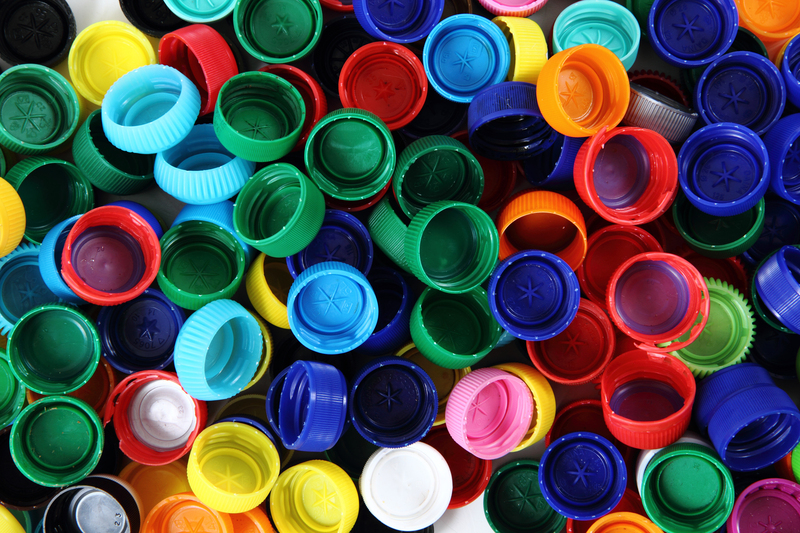The Role of Education in Promoting Responsible PPE Waste Disposal
In the wake of the COVID-19 pandemic and the subsequent surge in the use of Personal Protective Equipment (PPE), responsible PPE waste disposal has emerged as a crucial global concern. Gloves, masks, gowns, and face shields are now indispensable in medical settings and the general public's daily lives. However, their improper disposal threatens not only environmental health but also public safety. A key solution to this challenge is comprehensive education on appropriate PPE waste management. Through awareness, training, and the dissemination of correct practices, education acts as a catalyst for sustainable behavioral changes at both individual and community levels.

Why is PPE Waste Disposal an Urgent Issue?
The rampant increase in single-use PPE has led to a parallel surge in PPE-related litter. Streets, beaches, and water bodies worldwide are now often found littered with disposable masks and gloves. This not only creates unsightly public spaces but also poses severe threats to wildlife, aquatic life, and human health. Microplastics from degraded PPE infiltrate ecosystems, while used PPE can be vectors for pathogens.
- Environmental Impact: Most PPE items are made from non-biodegradable plastics, persisting in the environment for decades.
- Health Risks: Improperly disposed of PPE can carry infectious agents, jeopardizing waste handlers and the general public.
- Social Responsibility: PPE waste reflects individual and collective responsibility towards community and environmental health.
Education plays a pivotal role in curbing the escalating PPE waste crisis by instilling responsible disposal habits. But how is education implemented, and why is it indispensable?
The Significance of Education in PPE Waste Management
Empowering Individuals Through Knowledge
Education informs individuals about the repercussions of careless PPE waste disposal. When people understand the potential hazards--from the spread of disease to environmental degradation--they are more likely to adopt safer and more sustainable behaviors.
- Awareness Campaigns: Governments and NGOs can launch outreach initiatives highlighting correct disposal techniques and the dangers of irresponsible disposal.
- Accessible Guidance: Including step-by-step disposal instructions, signage, and visual aids help reinforce positive habits among all age groups.
Encouraging Responsible Practices Across Sectors
The responsibility for PPE waste management spans several sectors, from healthcare institutions and schools to public spaces and the private sector. Here, education serves as a unifying force, creating a standard protocol for PPE disposal.
- Healthcare Training: Medical professionals are provided with training for proper segregation, collection, and disposal of contaminated PPE.
- Teacher-Led Initiatives: Educators can weave PPE waste lessons into science, health, and civic education curricula.
- Corporate Policies: Businesses can incorporate PPE disposal protocols into occupational health and safety training.
Promoting Community and Youth Engagement
Youth education is especially impactful for fostering lifelong responsible habits. Community-based educational programs not only reach more people but also establish local role models and champions for sustainable PPE waste practices.
- School Projects: Interactive projects, like classroom PPE waste audits and poster-making, nurture environmental stewardship in children.
- Community Clean-Ups: Partnering with local organizations to conduct PPE waste collection drives fosters civic pride and hands-on learning.
Essential Educational Strategies for Promoting Responsible PPE Waste Disposal
1. Public Awareness Campaigns
Effective PPE waste disposal begins with a well-informed populace. Government agencies and non-profit organizations can launch intensive multimedia campaigns to promote PPE disposal best practices. These initiatives may include:
- Television and radio broadcasts explaining the environmental impacts of single-use PPE and providing tips for safe disposal.
- Social media outreach using infographics, short videos, and challenges that encourage responsible behavior.
- Printed materials (leaflets, posters) in public spaces, clinics, and schools illustrating how and where to dispose of used PPE.
2. School-Based Programs
Integrating PPE waste education into school curricula ensures the next generation is equipped with critical knowledge. Strategies include:
- Lesson plans covering the lifecycle of PPE and its environmental consequences if mismanaged.
- Collaborative projects such as PPE waste audits, recycling drives, and student-led presentations.
- Teacher training workshops focused on best practices for safely handling and disposing of used PPE.
3. Workplace Training
Employment settings, especially those requiring masks and gloves, must provide comprehensive PPE waste protocols as part of occupational health and safety programs:
- Staff workshops explaining separation of contaminated and non-contaminated PPE waste.
- Signage and reminders in break rooms and common areas to reinforce proper disposal habits.
- Waste collection points clearly labeled for PPE items to prevent accidental mixing with regular trash.
4. Community-Based Initiatives
Local governments and community organizations can collaborate to provide localized educational opportunities:
- Public seminars and discussion forums on the importance of responsible PPE waste management.
- Volunteer 'eco-champions' programs to model best practices and assist others.
- PPE waste disposal competitions that engage neighborhoods and reward responsible behavior.
Challenges to Responsible PPE Waste Disposal Education
Lack of Universal Guidelines
Despite global recognition of the PPE waste problem, national and local policies often vary. This lack of standardized approaches can create confusion, leading to improper disposal. Educational programs must prioritize clarity and adapt information to suit local needs and regulations.
Resource Constraints
Many communities--especially in developing regions--face budgetary and logistical limitations. Access to waste bins, disposal sites, or educational resources may be limited. Innovative solutions, such as low-cost communication channels and reusable-demo kits, can help bridge these gaps.
Behavioral Barriers
Habits are hard to change. Many people may not see the immediate impact of improper PPE disposal or may lack motivation for responsible action. Repeated, engaging, and emotionally resonant education is crucial to foster genuine and long-lasting shifts in behavior.
Modern Innovations in PPE Waste Education
Digital Tools and E-Learning
The digital revolution offers new frontiers for education on PPE waste management. Mobile apps, online courses, and interactive games can impart essential messages while tracking individual progress.
- E-learning modules for health workers and educators on the latest PPE waste protocols.
- Gamified challenges for students, rewarding correct knowledge and consistent responsible behavior.
- Virtual reality demonstrations to simulate PPE waste processing, recycling, and its environmental impact.
Partnerships and Collaborative Networks
The most effective educational initiatives combine expertise from various sectors. Partnerships between governments, NGOs, academic institutions, and industry maximize reach and impact.
- Joint campaigns between municipal authorities and environmental NGOs for city-wide PPE waste challenges.
- Academic research partnerships to study behavior change and best educational practices.
- Industry alliances to standardize labeling and communication about PPE disposal.
Monitoring and Feedback Mechanisms
For education to be effective, it must be measured and refined over time. Feedback loops and progress tracking help ensure responsible PPE waste behaviors are adopted and maintained.
- Surveys and interviews to assess changes in public knowledge and habits.
- Online reporting tools enabling people to flag improper PPE littering and share solutions.
- Regular review and adaptation of educational content based on local feedback.
Optimizing Educational Content for Maximum Impact
Clarity and Simplicity
Messages about PPE waste disposal must be easy to understand and actionable. Use clear visuals, concise language, and direct calls-to-action so that everyone--from children to the elderly--can follow them without confusion.
Cultural Sensitivity
Different communities have varied waste management practices and beliefs. Educational initiatives should respect these differences, offering localized solutions that align with existing customs while guiding improved behaviors.
Continuous Reinforcement
Habits take time to develop. Regular reminders through posters, digital alerts, or community announcements help reinforce responsible PPE waste disposal habits until they become routine.
Interactive and Engaging Methods
Interactive learning--such as quizzes, games, and hands-on demonstrations--ensures better retention of critical information about PPE waste, with participants more likely to remember and act on what they learn.
How Can Individuals Participate in Responsible PPE Waste Disposal?
Education begins at home and extends outward. Each person can be a role model for their family and community. Here's how individuals can contribute to responsible PPE waste management:
- Follow government and local guidelines for disposing of PPE. Do not flush masks or gloves down toilets or drains.
- Use designated bins for PPE waste--separate from household recyclables and compostables.
- Wear reusable PPE (such as cloth masks) when possible, washing and maintaining them according to health recommendations.
- Educate others, especially the young and elderly, about the hazards of improper PPE disposal.
- Report PPE litter in public spaces to the relevant authorities or participate in local cleanup events.

The Long-Term Impact of Education on Environmental Health
Educational investment in proper PPE waste disposal carries benefits far beyond the immediate pandemic response. Over time, it:
- Reduces plastic and microplastic pollution in landfills, waterways, and natural habitats.
- Lowers disease transmission risk by minimizing contact with contaminated materials.
- Builds a culture of environmental stewardship that can be extended to other areas, such as general waste reduction and recycling.
- Empowers future generations to innovate new solutions and advocate for planet-friendly practices.
Conclusion: Education as the Foundation for Responsible PPE Waste Disposal
The exponential growth in PPE use has underscored the importance of sustainable disposal habits. Education is the linchpin in addressing the PPE waste crisis. Through informed public awareness, school and workplace programs, and community-driven campaigns, societies can mitigate the adverse impacts of PPE on human and environmental health.
As communities, institutions, and governments continue to invest in PPE waste disposal education, they lay the groundwork for a cleaner, safer, and more resilient world. By integrating knowledge with actionable solutions and persistent reinforcement, we can all play a pivotal role in combating PPE pollution--protecting both people and our planet for generations to come.
Let us commit to learning, educating, and taking conscious steps toward responsible PPE waste disposal--today and every day.
